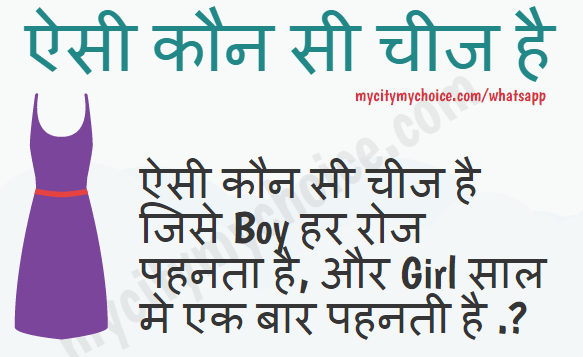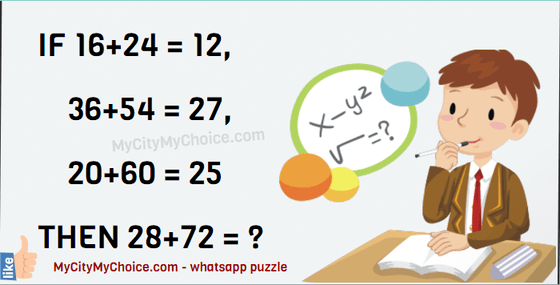Answer of puzzle (There is an island with 12 islanders) is as follows:
First please understand that this puzzles only asks you to identify the islander of different weight (odd man) it doesnt ask you to tell whether he is heavier or lighter. Based on this assumption let give these islanders name from “A” to “L”
First Scale : Scale A, B, C and D against E, F, G and H. Now the possible results are as follows.
Result 1 : See saw balances
Second Scale : In this case, obviously, odd man is I, J, K or L. Now scale I and J against A and B. (Remember A and B are not odd man). Below would be the possible results.
Result 1.1 : See saw balances : In this case odd man is either K or L
Third Scale : Now scale “K” against “A” (Remember “A” is not odd man). Possible results are as follows.
Result 1.1.1 : See saw balances : If this is the case “L” is the odd man i.e he is of different weight. You can also tell he is heavier or lighter based on the see saw position, up or down.
Result 1.1.2 : See saw doesn’t balance : If this is the case “K” is the odd man i.e he is of different weight. You can also tell he is heavier or lighter based on the see saw position, up or down.
Result 1.2 : See saw doesn’t balance : In this case odd man is either “I” or “J”
Third Scale : Now scale “I” against “A” (Remember “A” is not odd man). Possible results are as follows.
Result 1.2.1 : See saw balances : If this is the case “J” is the odd man i.e he is of different weight. You can also tell he is heavier or lighter based on the see saw position, up or down.
Result 1.2.2 : See saw doesn’t balance : If this is the case “I” is the odd man i.e he is of different weight. You can also tell he is heavier or lighter based on the see saw position, up or down.
Result 2: See saw doesn’t balance : If this is the case I, J, K and L are clean and odd man is only from A, B, C, D, E, F, G and H. Now lets assume that total weight of A, B C and D is heavier than E, F, G and H. i.e A+B+C+D > E+F+G+H
Second Scale : Now lets remove A, B and C from the see saw and move FGH from F to D. Also bring IJK in the picture and make them sit with E, remember IJK are not odd man. Now the new set in see saw is DFGH and EIJK.
Result 2.1 : See was balances : Obviously that means odd man is from A, B and C (Remember they were removed). Now to find out odd man from them, we need to perform one more scale.
Third Scale : Now put “A” against “B”. You will have following results.
Result 2.1.1 : See saw balances : That means “C” is the odd man. You also know whether he is heavier or lighter. You know this from previous steps (result 2) whether ABCD were lighter or heavier from EFGH.
Result 2.1.2 : See saw doesn’t balance : To find out the odd man you need to know the position (lighter or heavier) of ABCD against EFGH from previous steps (result 2). If ABCD were lighter odd man is lighter otherwise heavier so based on the see saw position you can determine whether “A” is odd man or “B”
Result 2.2 : See was doesn’t balance same side: If this is the case we know that A, B and C are not odd man and we already know that I, J, K and L are not odd man. Now if the see saw is still not balancing in same position (i.e earlier ABCD were heavier and now still AFGH is heavier) we can conclude that odd man is from F, G or H. To figure out who is odd man from FGH we need to perform final scale.
Third Scale : Now put “F” against “G”. You will have following results.
Result 2.2.1 : See saw balances : That means “H” is the odd man. You also know whether he is heavier or lighter. You know this from previous steps (result 2.2) whether AFGH were lighter or heavier from EIJK.
Result 2.2.2 : See saw doesn’t balance : To find out the odd man you need to know the position (lighter or heavier) of AFGH against EIJK from previous steps (result 2.2). If AFGH were lighter odd man is lighter otherwise heavier so based on the see saw position you can determine whether “F” is odd man or “G”
Result 2.3 : See was doesn’t balance reverse side: Now if see saw reverses its position, i.e earlier ABCD were heavier against EFGH but now EIJK is heavier than DFGH, odd man is either D or E.
Third Scale : Now put “D” against “A”. Remember “A” is not odd man. You will have following results.
Result 2.3.1 : See saw balances : That means “E” is the odd man. You also know whether he is heavier or lighter. You know this from previous steps (result 2.3) whether EIJK were lighter or heavier from DFGH.
Result 2.3.2 : See saw doesn’t balance : This means “E” is the odd man. You also know whether he is heavier or lighter. You know this from previous steps (result 2.3) whether EIJK were lighter or heavier from DFGH.







